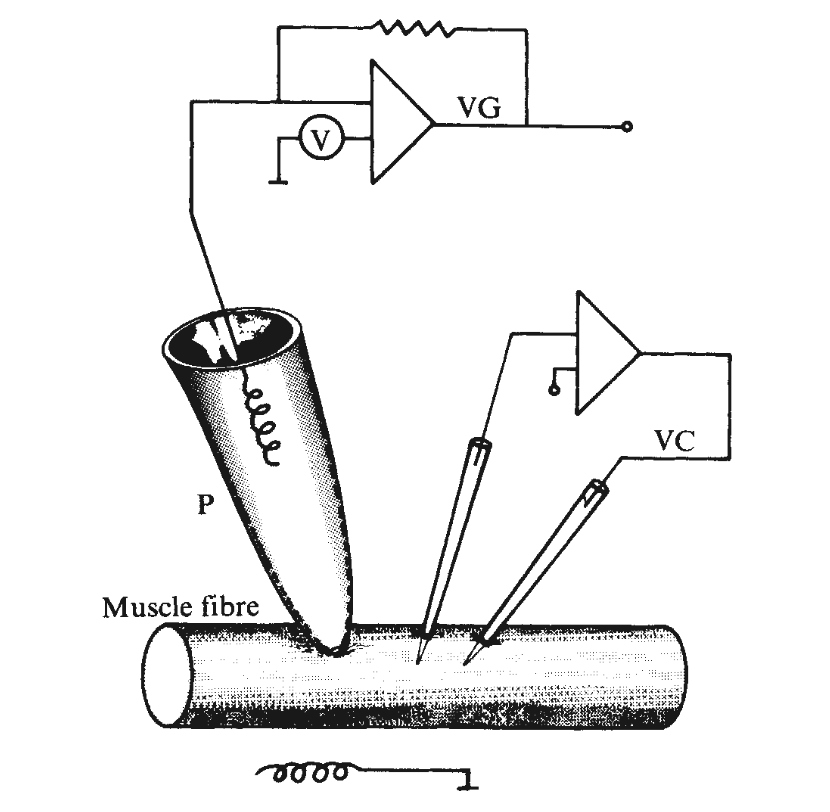Sensory Circuits
What is a Biosensor
- A device to transduce raw biological data into machine-readable signal (usually electronic)
Input/Output
-
Signal Source
- Force
- Light
- Concentration
- etc.
- Output
- Analog
- Digital
Seeking Easiness
- There exists too many methods to transduce a quantity to electronic signals
- What is the best?
Case-wise Discussion
- Amplitude of the transduced signal
- Linearity
- Range
- Difficulty of Manual Procedure
Signal Characteristics
- Typical biological signals are weak
- Low amplitude
- High impedance
- Amplification required
- But how?
Direct Amplification
- Amplification using a lab operational amplifier
- Easy to setup
- Prune to electronic noise
- Imperfect common ground
- EMI (high input impedance)


Voltage Clamp in Patch Clamping
Sakmann, Neher (1976)
Single channel currents recorded from membrane of denervated frog muscle fibers
Objective:
- Measure the ion current through the patch(P)
Problem:
- Ground potential varies during the experiment

Voltage Clamp
Sakmann, Neher (1976)
Single channel currents recorded from membrane of denervated frog muscle fibers
The Voltage Clamp(VC) is used to keep the membrane voltage constant in a small area.
The VC uses the Patch as a reference, to compensate for the change in ion concentration
Physical Amplification
- Amplification using an intermediate signal
- Light, sound, etc.
- Examples?
Fluorescence
- Can we measure single-neuron activity more easily?
- Ca2+ flows through the membrane when the neuron is excited
Exploiting Calcium Level
- Genetically Encoded Calcium Indicators (GECIs)
- Fluorescence level varies proportionally with
deck
By proffan
deck
- 545
